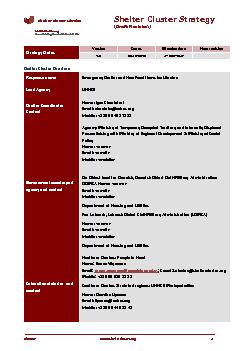Ukraine
Shelter/NFI Cluster Strategy for Ukraine - 2017
The Strategy outlines approaches of the Cluster partners to the assistance to the conflict affected population in Ukraine: Internally Displaced persons, non-displaced population with damaged dwelling, host communities, returnees and commuters.
Although Ukraine is a middle income country, the capacity of the government, further limited by economic crisis, to fully provide services in government-controlled areas (GCA) is constrained, and its ability to provide services in areas not fully under government control is limited. In addition, the ability of the state to rehabilitate infrastructure and shelter has been weakened. In this context, access to basic lifesaving services has been disrupted throughout much of the affected area. Prices of food and non-food items in Ukraine have been steadily increasing, and constrained economic access to non-government controlled areas (NCGA) has resulted in disruption of supply to local markets. Since access to cash, income or social benefits for those displaced – and particularly those remaining in NCGA – may have been disrupted, the ability of displaced and conflict-affected population households to meet their needs in a sustainable way may be limited. Moreover, this influx has placed a strain on the hosting population, in particular in areas with a high ratio of IDPs compared to local population.
The response so far has focused on the most vulnerable due to the lack of resources and capacities. As a result, a large part of the population, especially those in rural areas and along the conflict line, have received little or no assistance.

